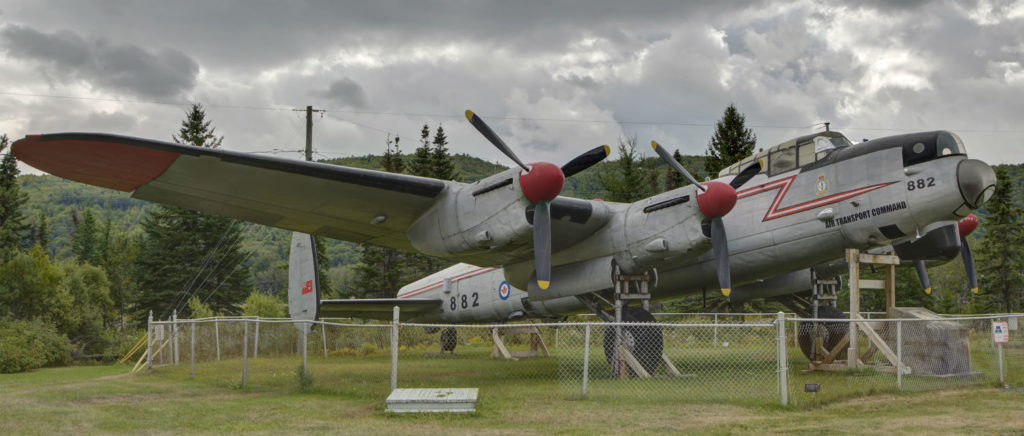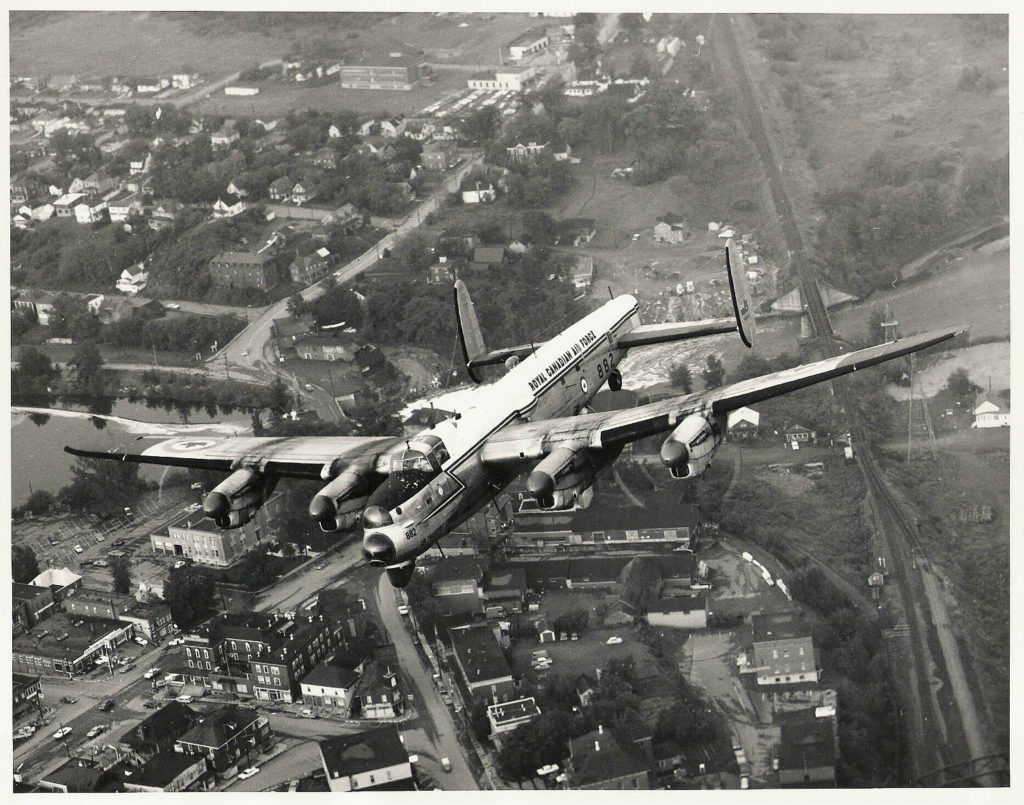Estimated reading time 4 minutes, 9 seconds.
Following a Sept. 20, 2017, ceremony marking the official transfer of ownership of Lancaster bomber KB882 from the City of Edmundston, N.B., to the National Air Force Museum of Canada, the Royal Canadian Air Force restarted work to dismantle the aircraft and prepare for its transport to its new home in Trenton, Ont.

Built by Victory Aircraft Ltd. in Malton, Ont., KB882 flew several combat missions over Europe before returning to Canada in 1945. In 1952, the aircraft underwent a major overhaul and conversion to area reconnaissance.
Assigned to the photo-reconnaissance role with 408 Squadron at RCAF Station Rockcliffe, in Ottawa, in 1953, KB882 proved instrumental in the mapping and charting of Canada’s Arctic. The aircraft was also used as an electronic and photographic intelligence gathering platform during the Cold War.
Shortly after its retirement in 1964, KB882 was sold to the City of Edmundston, where it has been displayed at the Edmundston Airport ever since.
“Lancaster KB882 tangibly represents the RCAF’s transition from war to peacetime activities,” said LGen Mike Hood, commander of the RCAF. “As the RCAF looks towards its 100th anniversary in 2024, Lancaster KB882 will serve as a valuable anchor for our commemorative activities, and a beacon for the preservation of RCAF and Canadian history and heritage.”

KB882 symbolizes the more than 50,000 Canadians who served in Bomber Command during the Second World War and the nearly 10,000 who lost their lives. Equally important, though less well known than the Lancaster’s wartime service, is the aircraft’s major post-war contribution to the RCAF’s Arctic patrol activities and aerial photographic work as Canada charted its wilderness.
Today, that heritage lives on, in the RCAF’s role as the guarantor of Canadian sovereignty–in times of both peace and conflict.
“The National Air Force Museum of Canada is honoured to have been selected as the final resting place for this historic aircraft, said Chris Colton, executive director of the National Air Force Museum of Canada.
“KB882 will be reborn and proudly displayed as our premier exhibit celebrating the 100th anniversary of the RCAF on the 1st of April, 2024. Its appearance, along with our restored Halifax Mark VII bomber, will be unique in the world as our museum will be the only one having both in a fully restored condition.”
A combined team from the RCAF’s Aerospace and Telecommunications Engineering Support Squadron (ATESS) and the National Air Force Museum of Canada are dismantling KB882.
The work is expected to take three to four weeks, and it is anticipated that the RCAF will transport KB882 to Trenton by the end of October 2017. This will be the third time that KB882 will be worked on by ATESS (and its predecessor 6 Repair Depot). The aircraft passed through their skilled hands in 1954 and 1964.
When the aircraft arrives in Trenton, it will be restored to her post-war Mark X AR (area reconnaissance) configuration with the aid of donations and volunteer efforts. Restoration is expected to take five to seven years.
When KB882 is on display for public viewing, the National Air Force Museum of Canada will be the only museum in the world to have in its collection a fully restored Handley Page Halifax and Avro Lancaster.









In 1959, Vic Johnson and I were roommates in Barracks at RCAF Rockcliffe. Vic was a phot tech and I was a radar air tech. My first flight ever was on a Lancaster test flight which i think was indeed 882.
I was still in contact with Vic until his recent passing. He may have had some of the camera equipment you require. Two sources you might try are a Dakota boneyard or the Arizona boneyard. There would be “similar” or even identical equipment on the lists. My vison is poor, but memory is still OK. Good luck in your searches and reconstruction project.